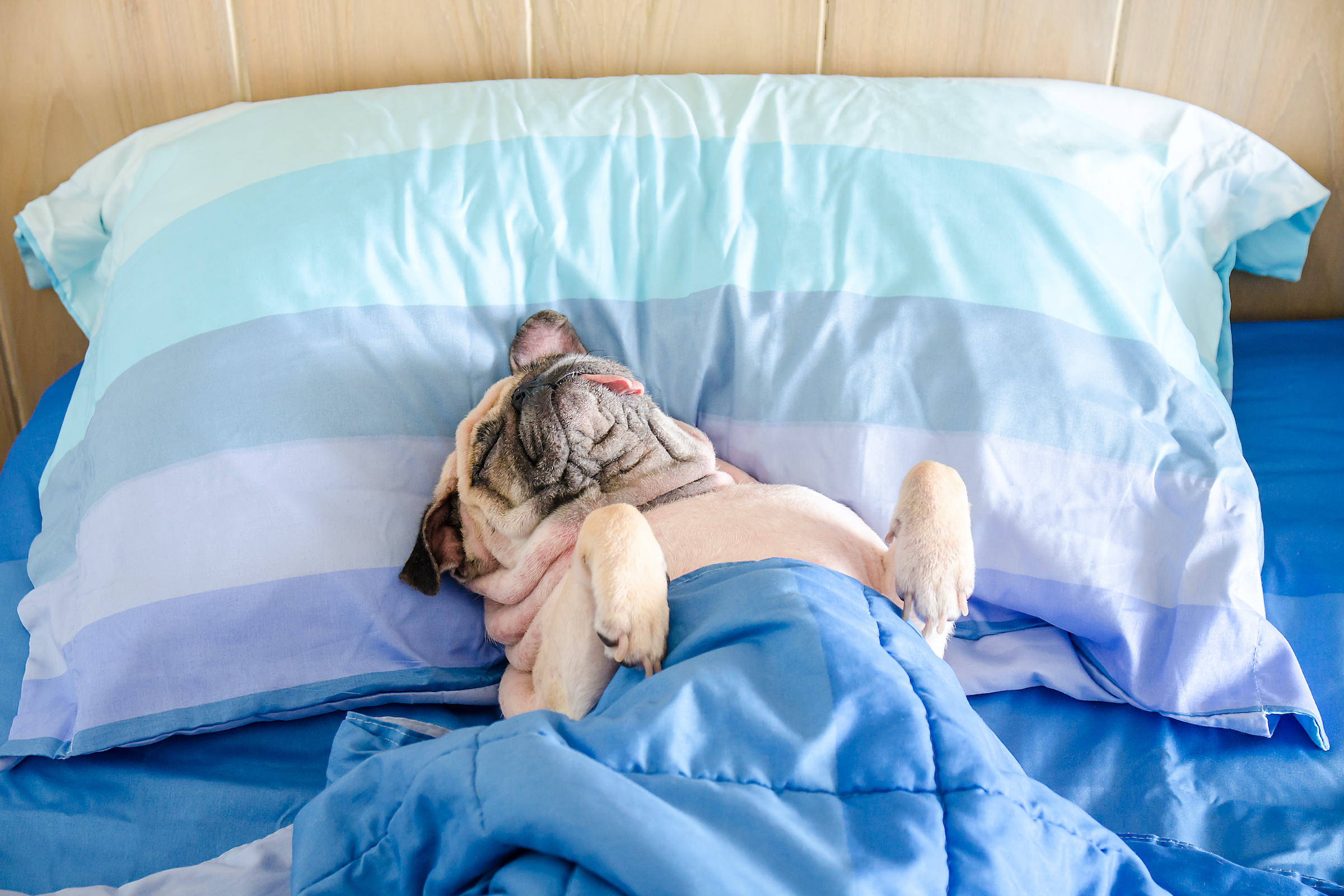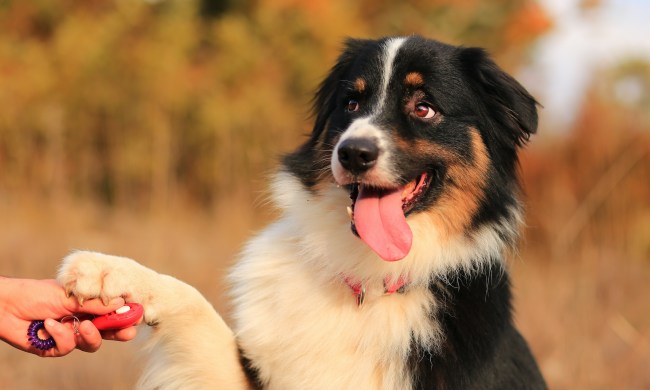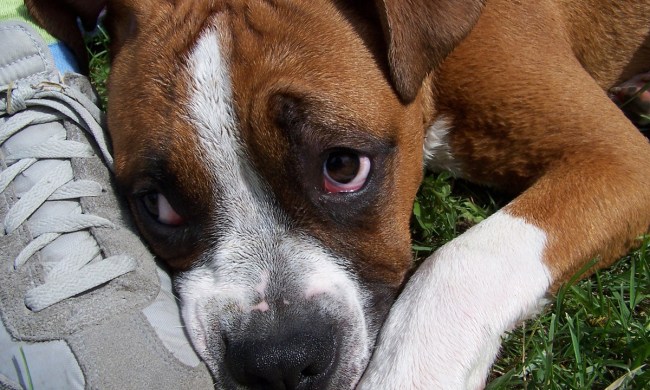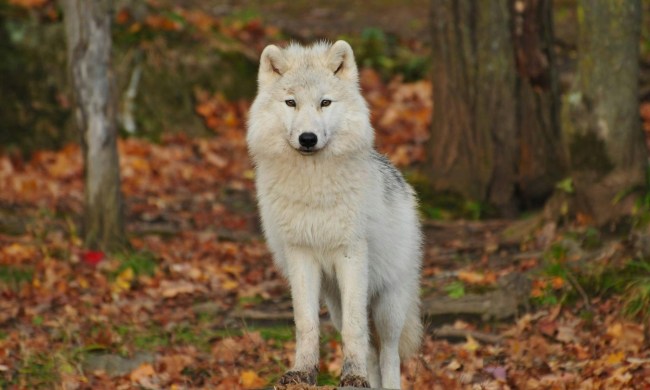As adorable and cuddly as your pup may be, sharing the bed with her may not be so fun — especially when you’re trying to sleep! Loud snores, flailing paws, and the never-ending quest to get comfy can get old, and we don’t blame you for wanting something new. This frustration and lack of sleep are what lead most pet parents to learn how to keep the dog off the bed, but this — like anything — is easier said than done.
If you’re ready to learn how to stop your dog from sleeping on your bed, read on for some training ideas and tips for making the transition as smooth as possible. From the ever-popular crate training to other little life hacks, you’ve got plenty of options to try before shelling out for a bigger bed.

How to train your dog not to sleep with you
Whether or not you want to invest in a crate, there are several ways to get your dog used to sleeping somewhere besides your bed. Whichever method you choose, it will take a few days for your pup to get used to the new routine, so be prepared for some crying and difficult nights. It’ll be worth it in the end — we promise!
Make their bed more attractive than yours
Who wouldn’t love a nap on your big comfy bed? One way to lure dogs into using their own bed is by making it as fun and appealing as it can be, whether through ultrasoft blankets, a few new toys that your dog can have only at bedtime, or even a small bedtime meal.
It’s important to deck out your dog’s sleeping space with as many canine comforts as possible. Dogs love enclosed, den-like areas, which is why a covered crate can be a peaceful spot to spend the night. Alternatively, a super-fluffy and supportive bed or a few special toys can make the bed more of a luxury for your fur baby. If all else fails, your pup will love finding a treat in her bed at night.
Use whatever will motivate your dog to lead her off your bed and into hers. This is where a crate can come in handy for stubborn pups. Whether or not you use one, though, incorporating a command like “bed” will help you make the transition without the use of treats one day once the routine is established.
Another important step in this process is keeping your bed not only undesirable but also off-limits. It may help to block off your bedroom altogether, if possible. If your dog likes pillows, put them away for the time being. For small dogs, make sure they have no stairs or other ways onto the bed.
Master the “off” command
Practicing one basic command can go a long way in keeping your bed fur-free: “off.” However, you’re going to need to guide your dog through the actions for a while — just until she gets the hang of it.
Start by rewarding your pup for jumping off your bed. Lure her off with a treat, toy, or praise, and make sure to say the word “off” as you do. This will teach your dog to associate the action with the command … and the reward!
Over time, you should be able to use the command without a nightly reward. As this action becomes habit, your dog will learn that the bed is a place that belongs to you, not her. Just make sure to use the command consistently and immediately once your dog jumps on the bed. No mixed signals allowed!
Tips for keeping your dog off the bed
As easy as it sounds to start making these changes, you’re sure to encounter some bumps in the road. That’s okay! As tricky as this process may be, there are a few tips and tricks that may help:
Be consistent with rules
As stated above, consistency is key when it comes to training dogs and establishing a routine. If your dog is allowed on the bed only sometimes, she may have difficulty discerning when this is — causing confusion and tension between you. There are exceptions, of course, including using a crate for overnight sleeping. Just don’t suddenly change the rules on your pup!
Splurge to make your dog’s space comfy
This transition, whichever way you approach it, will be a whole lot easier if your dog truly likes her bed or crate. Think of it like spending time in your bedroom: If your space is filled with things you like and something to entertain yourself with, it’ll be great. If it’s boring and uncomfortable, though, you won’t look forward to going back.
Decide whether to invest in a crate
There are pros and cons to incorporating crate training into your nightly routine, but you’re the only one who can decide in the end. It can become a comforting place for many dogs, but others just don’t warm to it. Don’t be discouraged if it takes some trial and error to figure it out!
We believe in you, pet parents. Uninterrupted sleep with the entire bed to yourself really is possible. Like any change, this transition will take some time, but a few rough bedtimes ahead are the only thing standing between you and a good night’s sleep. You’ve got this!



